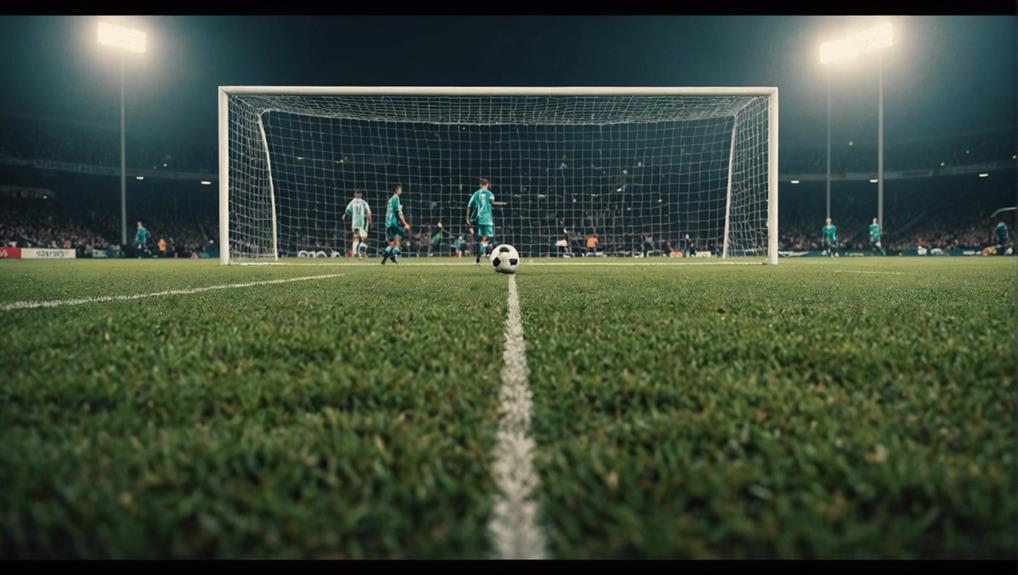
What Are the 3 Essential Rules of Soccer?
April 24, 2024To excel in soccer, grasp the three key rules. Field size, equipment, and gear are essential. Players must follow conduct norms and team setup guidelines. Be aware of offside regulations during matches. Understanding these rules contributes to your soccer prowess.
Field Dimensions and Equipment Requirements
Field dimensions and equipment requirements in soccer play a crucial role in guaranteeing fair and safe gameplay for all participants. Soccer fields typically measure between 100-120 yards in length and 70-80 yards in width, with distinct markings for boundaries and key areas. The goal posts stand 8 yards wide and 8 feet high, positioned at the center of each goal line to mark the scoring area.
When it comes to the ball specifications, the soccer ball must be spherical, with a circumference ranging from 27 to 28 inches and a weight between 14 to 16 ounces. Players are mandated to wear shin guards to protect their lower legs during matches. Additionally, there are specific attire rules that players must adhere to, including wearing a shirt, shorts, socks, and appropriate footwear. Goalkeepers often wear distinct colors to facilitate easy identification on the field, enhancing team coordination and gameplay efficiency. Adhering to these field dimensions and equipment guidelines ensures a level playing field for all involved in the game.
Player Conduct and Team Composition
Ensuring fair play and sportsmanship, players in soccer must adhere to specific conduct guidelines and team compositions for a successful and harmonious match experience. Player conduct is paramount, with an emphasis on sportsmanship and respect towards teammates, opponents, and match officials. Upholding these values fosters a positive environment on the field.
Team composition is another essential aspect. Each team must field a set number of players, including a goalkeeper, to start a match. Substitutions are allowed within the rules to guarantee fair competition and maintain player safety. It's essential that all players and substitutes follow regulations concerning equipment and attire to promote uniformity and safety.
Team captains play a pivotal role in representing their team and acting as liaisons with match officials. Their leadership and communication skills are crucial in maintaining order on the field. By upholding player conduct standards and adhering to team compositions, soccer matches can run smoothly and fairly.
Match Play and Offside Rule

Understanding the dynamics of match play in soccer involves grasping the intricacies of the offside rule. The offside rule dictates that a player is in an offside position if they're closer to the opponent's goal line than the ball and the second-to-last defender when the ball is played to them.
Here are some key points to take into account regarding the offside rule:
- Being in an offside position isn't an offense on its own.
- A player becomes actively involved in play by receiving the ball in an offside position.
- If a player in an offside position receives the ball, the opposing team is awarded an indirect free kick from the position where the offside player interfered.
- The offside rule aims to balance the game between attacking and defending teams, preventing unfair advantages and adding strategic depth to gameplay.
Understanding the offside rule is essential for players, coaches, and fans to appreciate the strategic aspects of soccer and avoid confusion during matches.
Conclusion
Now that you know the 3 essential rules of soccer, you'll be ready to hit the field with confidence.
But remember, there's always more to learn and explore in the world of soccer.
Stay tuned for more tips and tricks to enhance your game and take your skills to the next level.
Who knows what exciting challenges and victories await you on the pitch?
Keep practicing and pushing yourself to new heights in the beautiful game of soccer.
